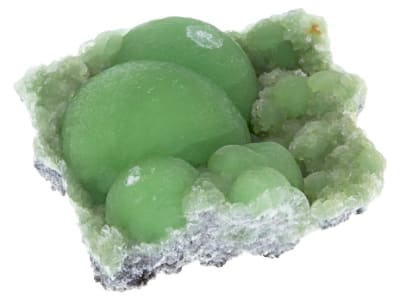Wavellite was discovered in 1805 at High Down, Filleigh, Devon, England. It was named after a local doctor William Wavell M.D. who brought it to the attention of the mineralogical community. It is translucent and can be found in blue, green, yellow, and white colors. Specimens can be stalactitic or the crystals can radiate from the center creating a spherical structure. Many notable specimens are found from the Ouachita Mountains in Mount Ida, Arkansas.
General Information
LWUV: White, Pale Yellow to Yellow, Green, Sky Blue
Wavellite Colors
-
 Blue
Blue -
 Brown
Brown -
 Colorless
Colorless -
 Green
Green -
 White
White -
 Yellow
Yellow
Countries of Origin
Russian Federation; Czechia; Guinea; United States of America; Egypt; Sudan; Madagascar; Kazakhstan; United Kingdom of Great Britain and Northern Ireland; Portugal; Sweden; Unknown; Mali; China; Ireland; Brazil; Poland; Slovakia; Bulgaria; France; Argentina; Romania; Hungary; Sri Lanka; Japan; Philippines; Rwanda; Uzbekistan; Bolivia (Plurinational State of); Spain; New Zealand; Liberia; Belgium; Norway; Senegal; Finland; Italy; Mexico; South Africa; Uganda; Australia; Germany
Care
Care needs to be taken with Wavellite because it is soluble and in acid and has a low mohs hardness.
